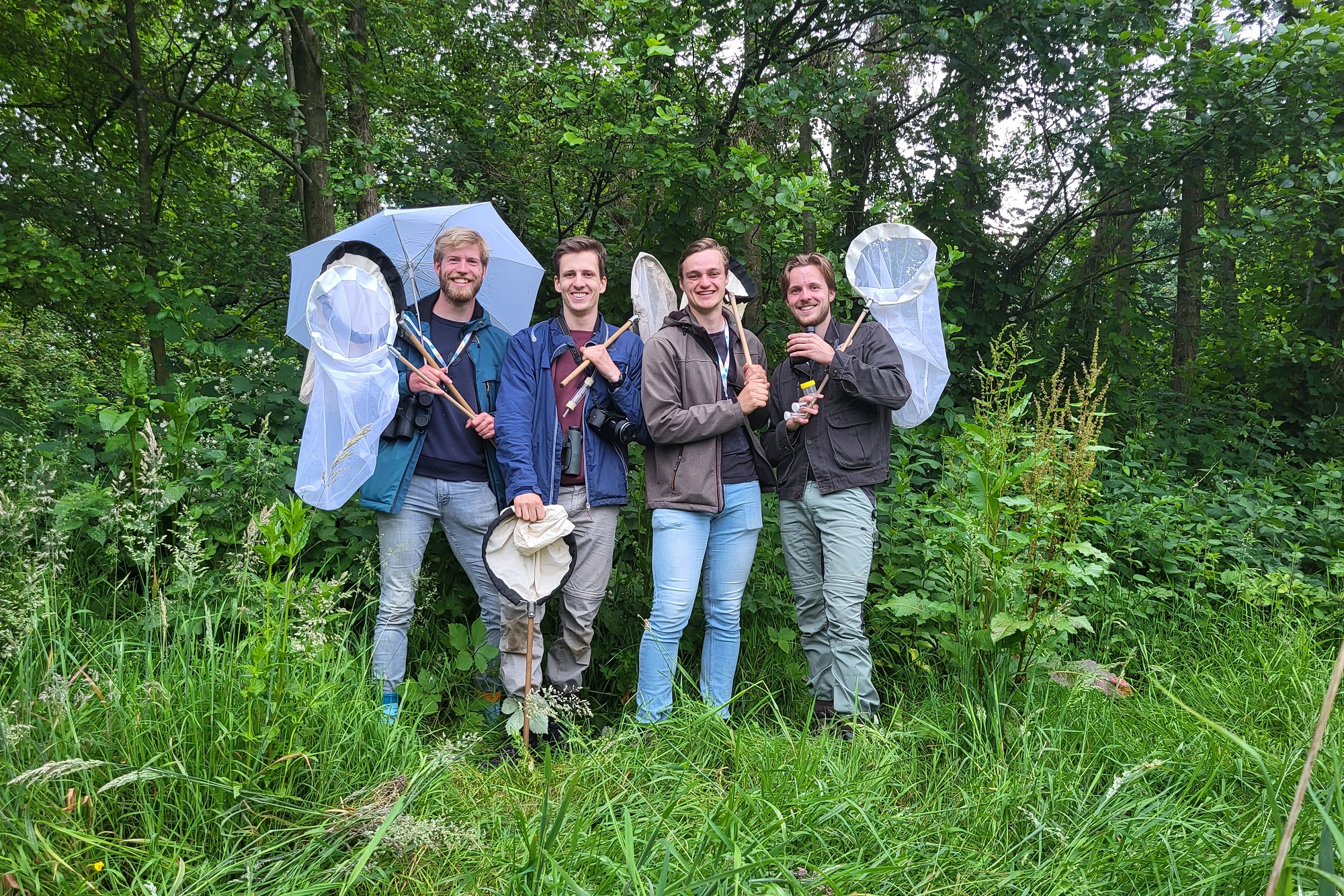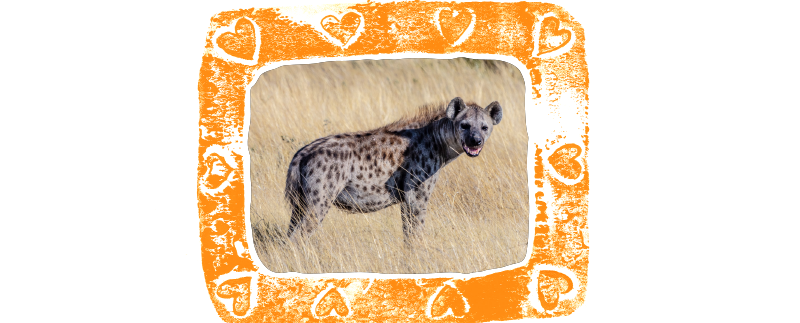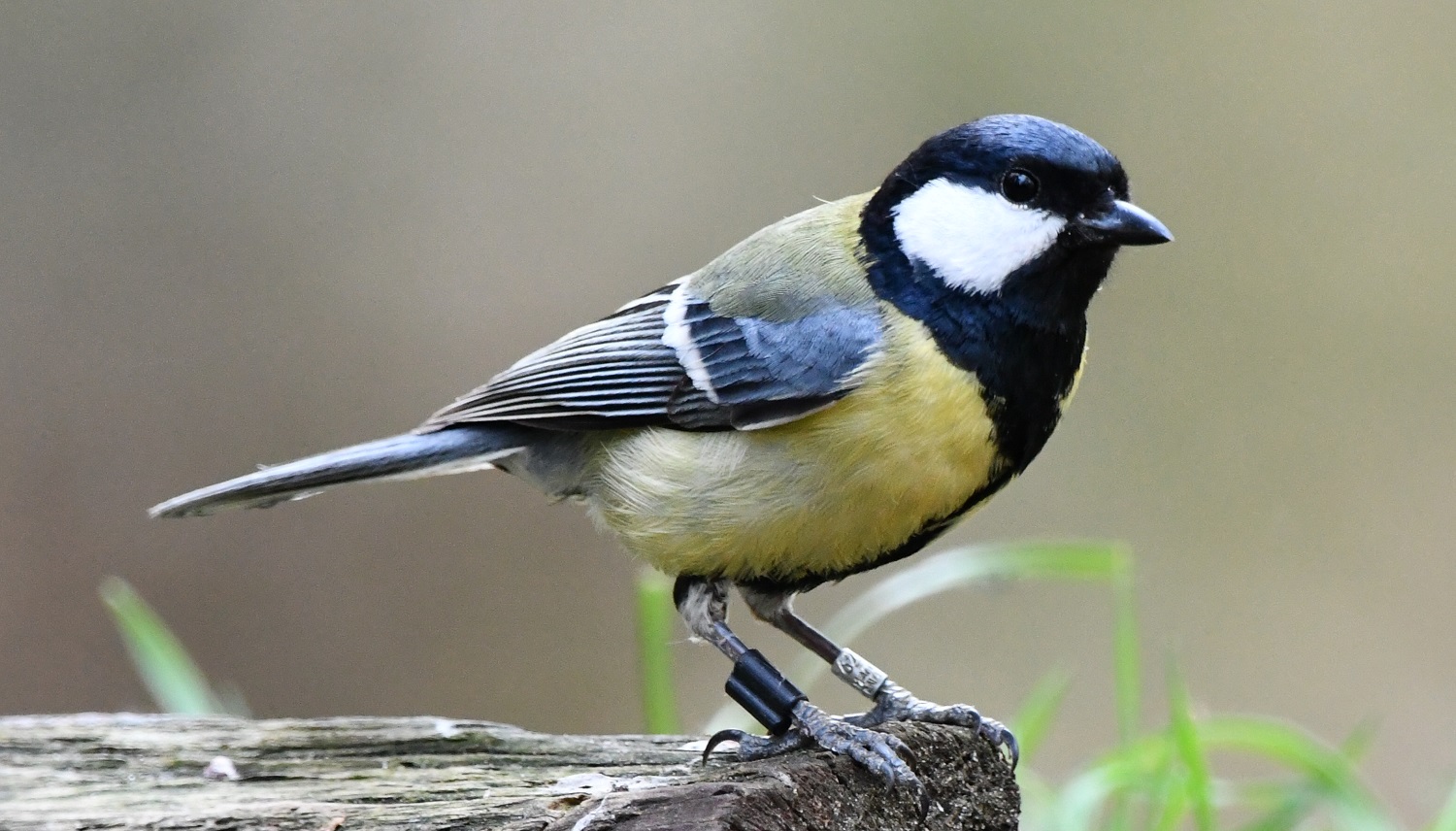Lapwings are raising hardly any chicks these days, monitoring of tagged birds has revealed. As a result, some of the birds are making bizarre excursions.
On a newly mown tract of grassland near the Brabant village of Eethen, student Roisin Normanly is emptying an insect trap. A week’s harvest floats in the bright blue liquid in the trap. The dead insects will be taken to the lab in Wageningen for logging. There are five more of these ‘reference points’ scattered around the landscape, which between them provide a picture of the insect population in this small section of the area known as the Land van Heusden en Altena.
We need that picture to understand why lapwing chicks born here are having such difficulty fledging, i.e. reaching the age when they are ready to leave the nest. Because that is where the problem lies.
Families with surviving chicks often stay in one place for a long time
Lapwings in the Netherlands are not thriving. ‘Lapwing numbers are falling by five per cent per year. It is estimated that there are still about 120,000 breeding pairs in the country but lapwing numbers have been declining sharply since the turn of the century. This is mainly because too few chicks reach adulthood.’
Visser has been researching the mortality of lapwing chicks since April, working with the Dutch Centre for Field Ornithology (Sovon) and the ecological consultancy Altenburg & Wymenga. For the first time, this is being done by fitting mother birds with GPS transmitters.
The declining lapwing population is a ‘domestic’ problem
At six locations in the country, six breeding lapwings were equipped with a lightweight (4.5 gram) GPS transmitter. ‘By keeping track of the mothers, we also know where the young are,’ Visser explains. ‘So we hobble after the mothers and measure things we consider relevant for the survival of the chicks.’
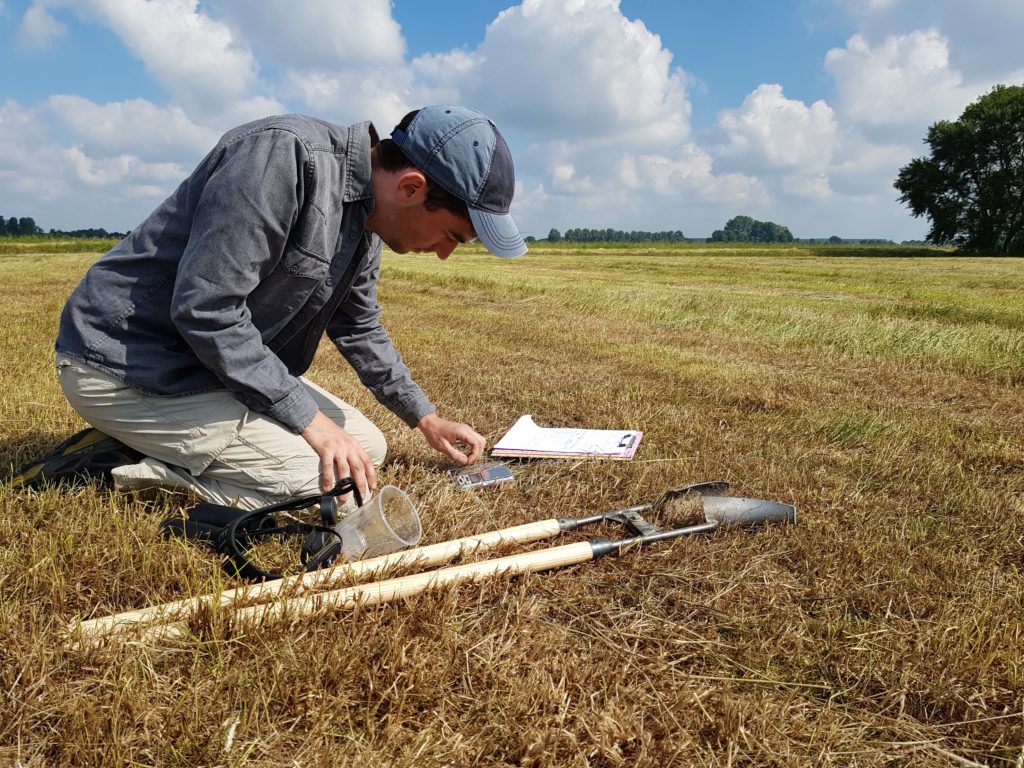
Decisive conditions
The measuring entails placing insect traps near the chicks’ roosting places, taking soil samples, measuring soil moisture and mapping the vegetation (high, low, etc.). Visser: ‘This data is compared with data from the fixed measuring points in the area. That shows you which families manage to raise their chicks and what conditions are decisive. Is it the worms in the soil, the availability of insects, or the humidity of the soil? That sort of thing.’
A key fact here is that lapwings are a precocial species, Visser explains. ‘That means that the chicks set off to find their own food soon after hatching. The parents protect and guide them. Insects are especially important for young chicks.
We had six clutches here and only one fledgeling survived
As they grow older, they eat more and more worms. But these have to be available. And that is determined by how hard and wet the soil is. Worms that are 50 centimetres deep in the ground are no use to lapwings.’
The transmitters record the locations of the birds every half hour. Every 12 hours, Visser receives these positions on his mobile phone via the GSM network. ‘There have been quite a lot of studies on field birds, but it has always been difficult to track them. You can colour-ring them, but even then they are easy to lose sight of. These transmitters make it a lot easier.’ They also generate some surprising observations.
Home birds
It seems that families with surviving chicks often stay in one place for a long time. Visser: ‘They get very attached to their locality and can get by with a territory of a few dozen square metres. So if they stay, it must be a good spot. If they start to roam further afield, you know it won’t end well.’ And birds whose clutch of chicks don’t survive have been known to do the oddest things. ‘One bird from Friesland flew to Ukraine. And one from this part of Brabant even flew to Russia. We have never seen that before. It is well known that lapwings migrate outside the breeding season, but during the season – that is really spectacular! We are now waiting to see what they will do there. It would be even more extraordinary if they started nesting there now. Two nests in one season, many hundreds of kilometres apart. The only way to find out such things is by tagging birds.’
Meanwhile, although the summer has yet to get going, it is clear that 2022 is going to be a bad year for lapwings. ‘We had six clutches here, with three to four eggs in each nest. And we only have one fledgling. The chicks just don’t make it here. And things are not much better at some of the other research locations,’ Visser says. ‘That is alarming and not good.
The number of lapwings is declining by five per cent per year
It’s an indication of how problematic the situation is.’ He does have an explanation for the poor results. ‘It has been a very difficult year. It was dry for a long time and drought is bad for field birds. Birds like wet ground, which they can peck away at. And most species of insects, the staple food of lapwing chicks, need wet conditions too.’
And then there is predation. Visser points out a marsh harrier being chased away by about 10 lapwings. ‘The lack of suitable habitats makes the chicks extra vulnerable to predation. Especially when the families start flying around the area, looking for suitable grassland.’
On a nearby tract of flooded land, a group of lapwings is foraging along the water’s edge. Visser takes out his telescope to see if any of his lapwings are among them. The study will continue for more than a month. ‘We will go on until they stop breeding. And that is still possible; lapwings have several broods per season.’
Tagging
Tagging lapwings is a time-consuming task. The birds are shy by nature. In Tim Visser’s study, the mother birds are captured at the end of the brooding period. ‘The urge to brood is strongest when the eggs are about to hatch,’ Visser explains. ‘Then they don’t let anything deter them.’ To tag a brooding bird, the eggs are first removed from the nest and replaced by fake eggs. A trap is then placed over the nest. Then it is a matter of waiting for the mother to return. ‘When she touches a taut string, the trap closes,’ says Visser. ‘The bird is fitted with a transmitter, and then you release it and put the real eggs back.’ The egg-swapping trick is a precautionary measure to avoid damaging the eggs.
Domestic problem
The black-tailed godwit is our national bird. But there are few sights more Dutch in the Dutch countryside than the lapwing. Up till now, at least. Since the 1980s, the number of breeding lapwings has been in free fall. Since the turn of the century, with an annual decline of five per cent, things have been going particularly fast. And the reason lies mainly in the Netherlands. Lapwings do migrate, but the survival rate of adult birds, which stay abroad outside the breeding season, is high and constant. The decline in lapwing numbers is therefore a ‘domestic’ problem: according to studies by Sovon, their reproduction rate is too low. The main difficulty seems to lie in raising the young to adulthood. Visser’s study is an attempt to discover the causes of this.

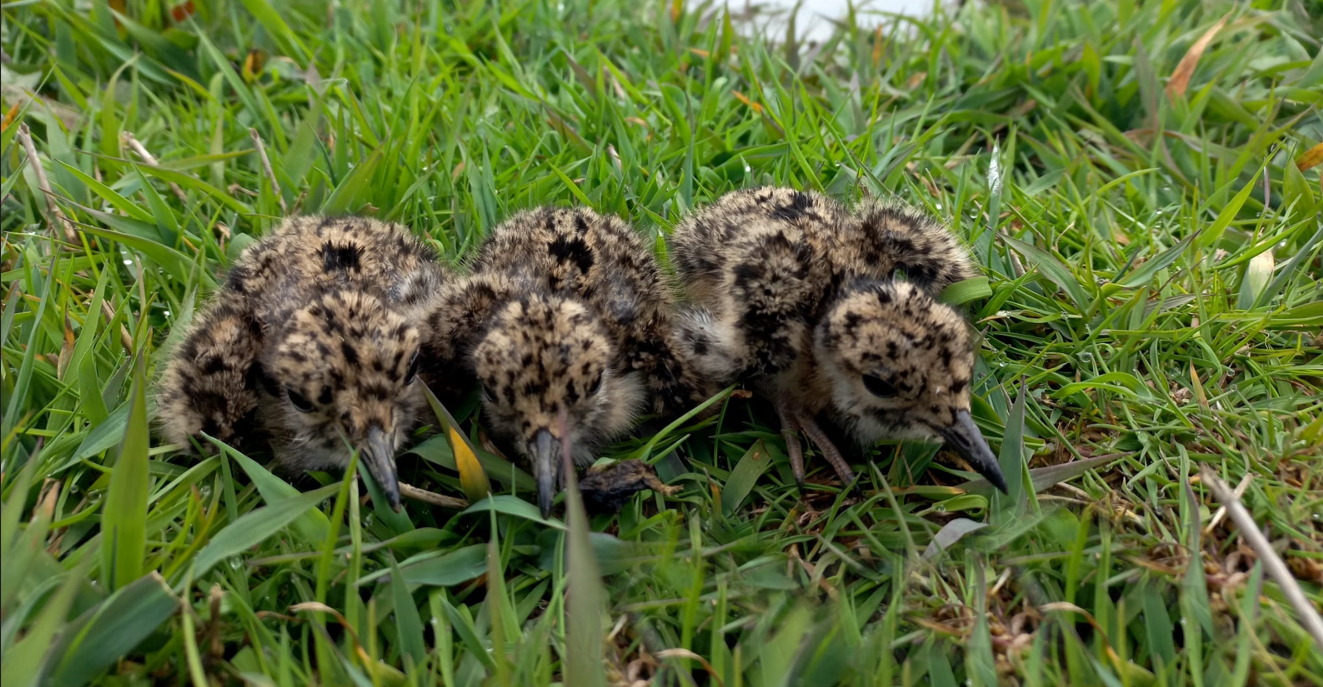 Lapwing chicks. Photo: Tim Visser
Lapwing chicks. Photo: Tim Visser 